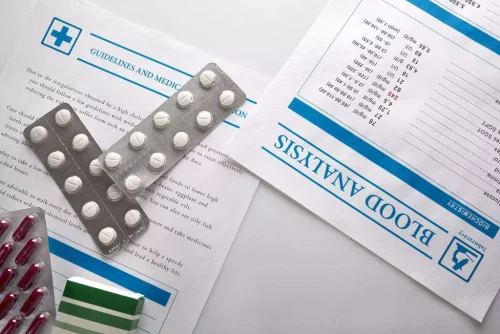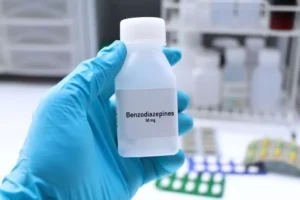
However, valvular heart disease often presents with a heart murmur, an abnormal sound heard through a stethoscope, which is not typical in alcoholic cardiomyopathy. Orthopnea, or difficulty breathing while lying flat, affects around what are 4 signs of alcoholic cardiomyopathy? 40-50% of patients with alcoholic cardiomyopathy. This symptom occurs because lying down causes fluid to shift from the lower extremities to the lungs, worsening pulmonary congestion. Patients with orthopnea often need to sleep with their head elevated on pillows to alleviate symptoms. This condition is a sign of advanced heart failure and should be taken seriously. Swelling in the legs, or peripheral edema, affects around 50-60% of patients with alcoholic cardiomyopathy.
Treatment of ACM
- Individuals with certain mitochondrial deoxyribonucleic acid (DNA) mutations and angiotensin-converting enzyme (ACE) genotypes (DD genotype) may be particularly susceptible to the damaging effects of alcohol.
- It weakens the heart muscle, making it harder for the heart to pump blood effectively.
- These may be detected with echosonography in around one-third of high-dose chronic consumers with preliminary evidence of subclinical left-ventricle (LV) diastolic dysfunction before progression to subclinical LV systolic dysfunction 57.
- However, dietary changes and medication are usually only effective when combined with or implemented following treatment for alcohol misuse.
- Therefore, efforts for the prevention, early detection, and specific treatment in this relevant disease should be established 45.
Some studies have suggested that a genetic vulnerability exists to the myocardial effects of alcohol consumption. Individuals with certain mitochondrial deoxyribonucleic acid (DNA) mutations and angiotensin-converting enzyme (ACE) genotypes (DD genotype) may be particularly susceptible to the damaging effects of alcohol. However, pulmonary hypertension is more likely to cause chest pain, lightheadedness, or fainting, especially during physical activity, which is less common in alcoholic cardiomyopathy. Unexplained weight gain occurs in approximately 30-40% of patients with alcoholic cardiomyopathy. As the heart’s function https://ecosoberhouse.com/ deteriorates, the kidneys may become less efficient at removing excess fluid from the body, leading to weight gain.
2. Ethanol-induced Myocyte Apoptosis and Autophagy

For comparison, the mean annual beer consumption in Bavaria is nowadays estimated to be 145 l and in the rest of Germany around 100 l beer per person and year 24. Another nutritional factor classically involved in the pathophysiology of AC was cobalt excess. The ‘Quebec beer drinkers’ cardiomyopathy’ was related to cobalt supplementation to beer that was made in the past.

5. Sarcomere Damage and Dysfunction in ACM
- To identify the causative agent of AC, investigators administered ethanol to rats pretreated with inhibitors of ethanol metabolism.
- In addition, ethanol has a widespread diffusion because of the potential for distribution though biological membranes, achieving targets not only in the membrane receptors and channels but also in endocellular particles and at the same nuclear compartment 29,99,100.
- Its deficiency predisposes individuals to ventricular arrhythmias and sudden cardiac death, particularly in the setting of concomitant potassium depletion.
- Although physicians are aware of this disease, several pitfalls in the diagnosis, natural history, prognosis and treatment are still present.
- Once the damage is considered irreversible, it’s difficult for the heart and rest of the body to recover.
This occurs because the weakened heart struggles to circulate blood effectively, causing fluid to accumulate in the lower extremities. The swelling is often more pronounced in the ankles and feet and may worsen throughout the day, especially after prolonged standing or sitting. In advanced stages, edema can extend to the abdomen and other parts of the body. Other lifestyle factors that may increase the risk include poor diet, lack of exercise, and smoking.
- To make a diagnosis, your doctor will perform a physical examination and ask you about your medical history.
- The ‘Quebec beer drinkers’ cardiomyopathy’ was related to cobalt supplementation to beer that was made in the past.

In conclusion, a combination of lifestyle choices, medical conditions, and genetic factors can contribute to the development of alcoholic cardiomyopathy. Understanding these risk factors can help individuals make informed decisions about their health and seek early intervention if they are at risk. The risk of developing alcoholic cardiomyopathy increases with age, particularly in individuals who have been drinking heavily for many years. Older adults are more likely to experience the cumulative effects of alcohol on the heart, and their bodies may be less able to repair the damage caused by alcohol.
Genetics may play a role in determining susceptibility to alcohol-induced heart damage. Some individuals may have a genetic predisposition that makes them more vulnerable to heart damage, even with lower alcohol consumption. Research is ongoing to understand the genetic factors contributing to alcoholic cardiomyopathy. According to the American Heart Association, alcoholic cardiomyopathy accounts for approximately 3-40% of all dilated cardiomyopathy cases in Western countries. It is more common in men, but women are also at risk, especially with long-term alcohol abuse. Early diagnosis and treatment can help slow the disease’s progression and improve quality of life.
Alcohol-induced disturbances in ion channels and calcium handling within cardiac cells contribute to QT prolongation, increasing the risk of arrhythmic events. Treatment includes medicines and sometimes surgically implanted devices and heart surgery. The mainstay of management is providing support, resources including but not limited to alcoholic anonymous and encouragement for alcohol abstinence and address underlying stressors if any which requires assistance from nursing staff and pharmacy. Some studies have suggested that even moderation of alcohol consumption similar outcomes as compared to abstinence. To maintain abstinence, recent investigations suggest the benefits of adjuvant medications, e.
The key to diagnosis is a personal history of chronic heavy alcohol use and the absence of other etiologies. In his 1972 review article, Bridgen was the first to introduce the term alcoholic cardiomyopathy 27. Moreover, ranolazine prevents ethanol-induced atrial arrhythmias both in vitro and in vivo by blocking the late sodium current, which is activated by CaMKII.112 Its effect on preventing the decrease of LVEF in AC is currently unknown. Alcohol-induced cardiomyopathy treatment includes a combination of lifestyle modifications, pharmacological treatment, management of arrhythmia, and supportive care. This review will provide an updated view of this condition, including its epidemiology, pathogenesis, diagnosis, and treatment (Graphical Abstract). Thiamine (200 mg once daily), multivitamins, vitamin B-12, folate, and mineral supplementation are beneficial for patients with AC because of the significant prevalence of concomitant nutritional or electrolyte deficiencies in these patients.
The prevalance of alcoholic cardiomyopathy in addiction units is estimated around %. Overall data with regards to alcohol induced cardiomyopathy is insuffienct and does not illustrate significant available data. It’s important to note that alcoholic cardiomyopathy may not cause any symptoms until the disease is more advanced. Germany with a total population of 81 million inhabitants is a permissive society with respect to the drinking of alcohol. The per capita alcohol consumption of 9.7 l pure ethanol and the early onset of regular or episodic intensive drinking among young people in Germany consequently leads to high alcohol-related morbidity and mortality 5. New therapeutic strategies for AC are being developed with the support of animal models.
In contrast, alcoholic cardiomyopathy typically shows a globally weakened heart muscle without inflammation. Pharmacologic therapy should include goal-directed heart failure therapy as used in idiopathic dilated cardiomyopathy with reduced drug addiction ejection fraction. This includes a combination of beta-blockers, an angiotensin-converting enzyme inhibitor, diuretics, aldosterone receptor antagonist and angiotensin blocker-neprilysin inhibitor (if LVEF is less than or equal to 40%). The use of carvedilol, trimetazidine with other conventional heart failure drugs have been proven to be beneficial in some studies.